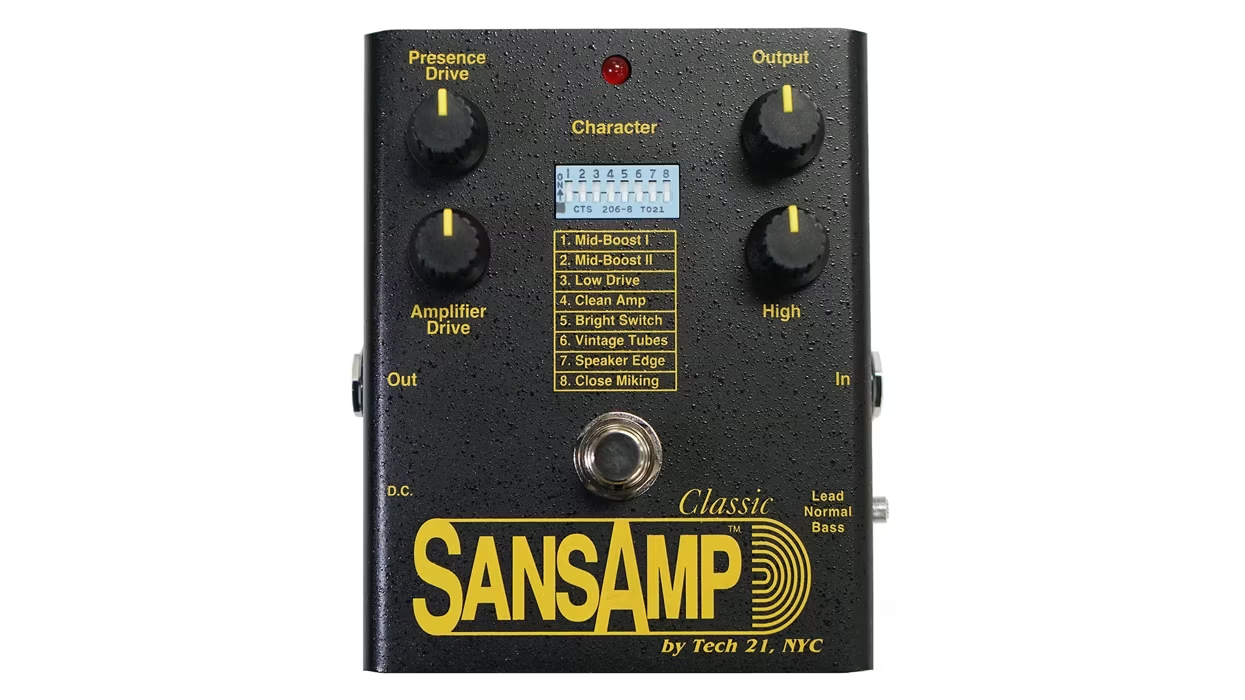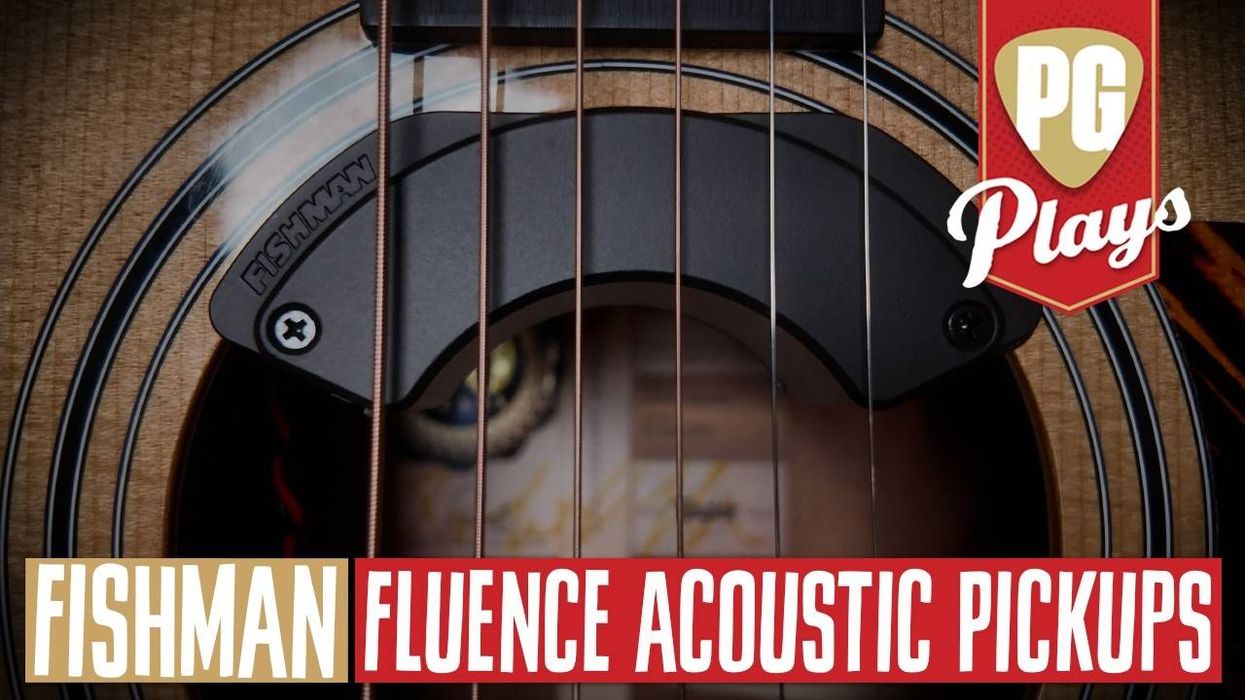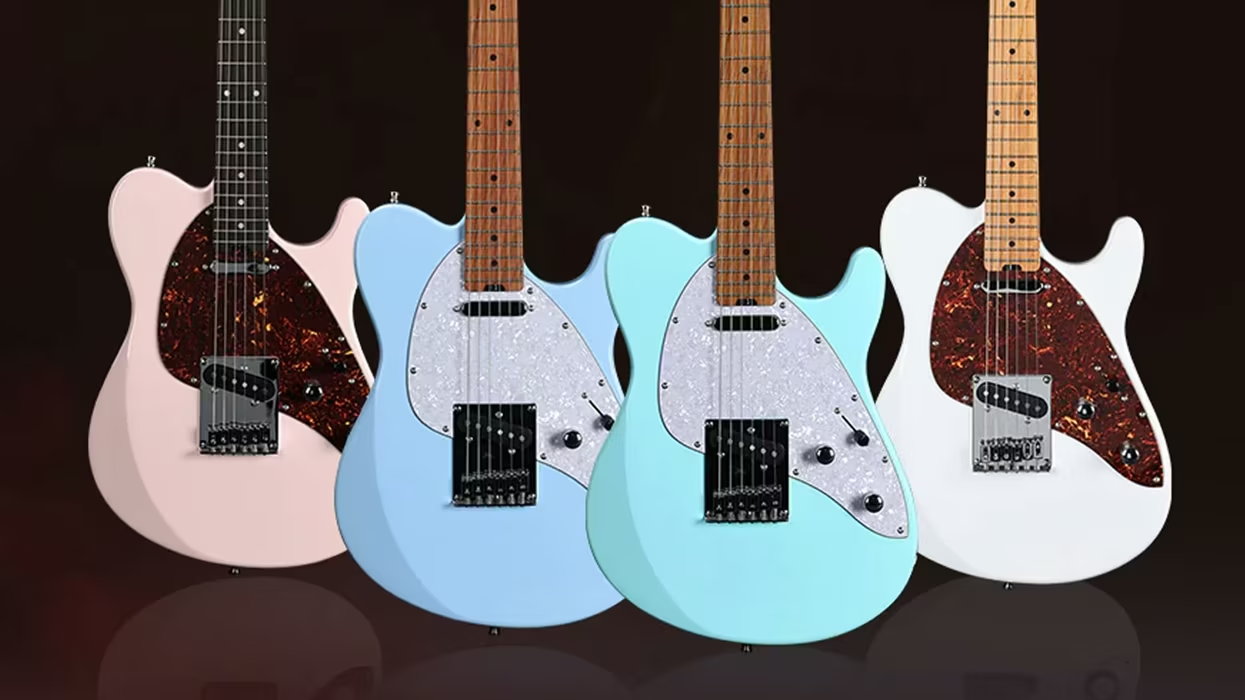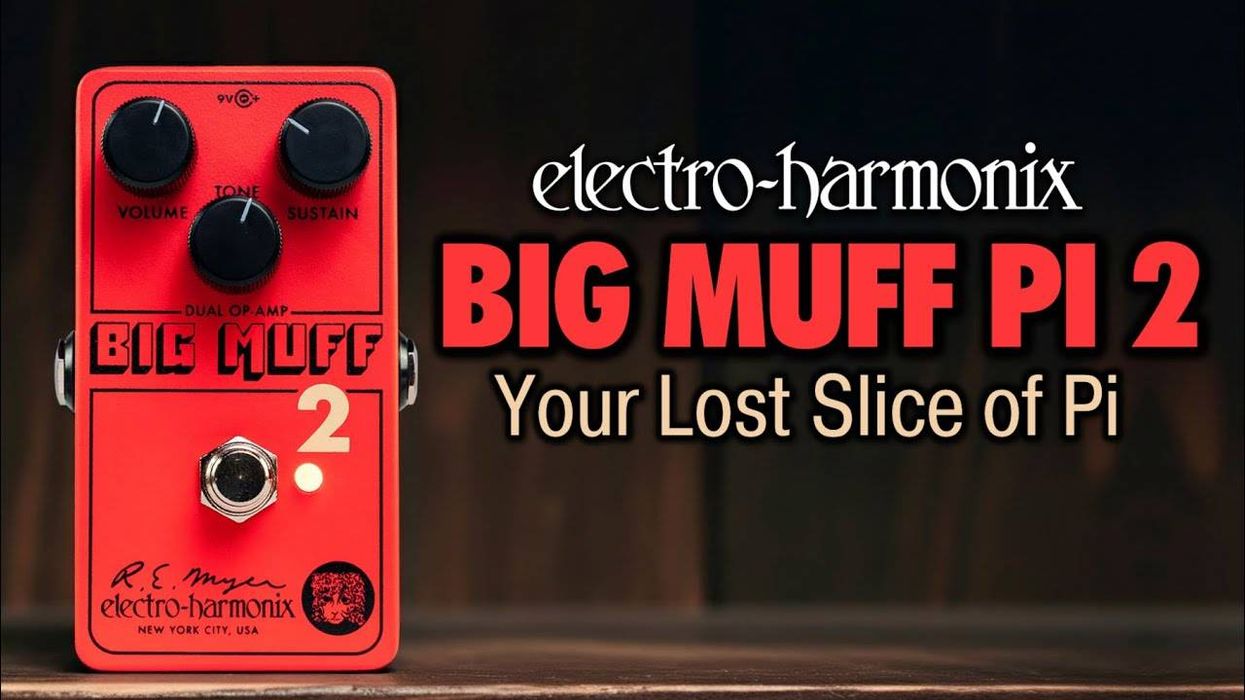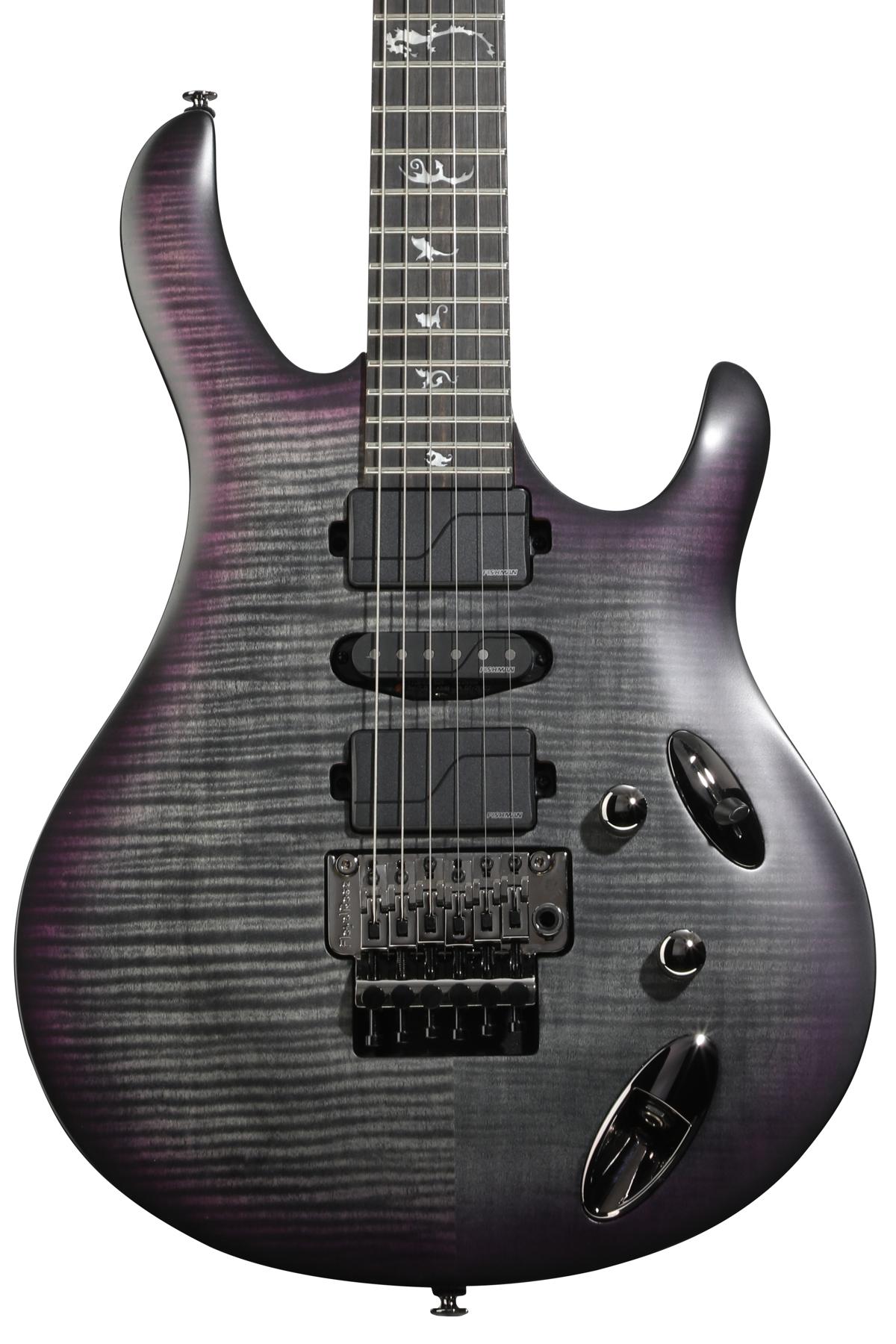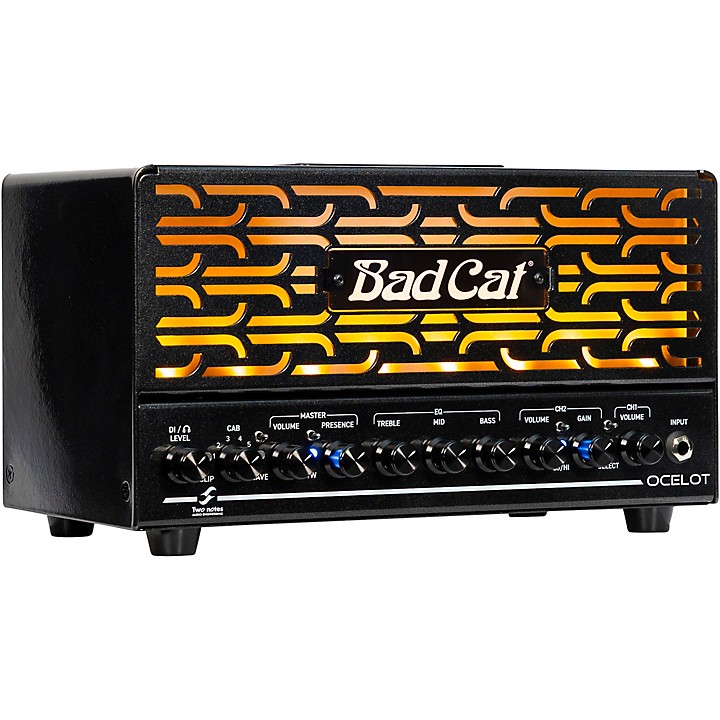Analog fixated as we can be, it’s easy to forget the days when digital technology was hailed as a triumphant savior. “Hmmph!” we said back in the ’80s as we chucked our obsolete Boss DM2s into waste bins and set to mimicking bands like Mr. Mister, both sonically and sartorially.
Many of us rethought the merits of digital (along with our personal fashion decisions) and returned to the charms of analog delays, and “digital” became a dirty word for many. But the Flight Time from Japan’s Free The Tone reminds us how much potential there is in digital delays—especially when the echo-shaping power that used to take up a rack space has been reduced to the size of a double pedal. This little pedal does a lot.
Rack in a Box
There aren’t any knobs on the Flight Time’s faceplate—most controls use small pushbuttons instead. But that doesn’t mean that programming the unit requires a voyage down a logarithmic rabbit hole. In fact, parameter adjustment is very intuitive.
The faceplate is organized in sections: The top row is home to controls like mix (labeled “delay”), feedback, and output level. The latter allows the user to add up to 3dB to a preset—handy if you want delayed solos to really pop. (If you’re shy, you can lower the volume instead). The next section contains controls for filtering and modulation and adjusting note subdivisions (from whole notes to sixteenths, with dotted and triplet options along the way). The second row controls preset banks, MIDI, delay time (which can also be set via BPM adjustment), and the master up/down and write controls. A third level has on/off switches for trail (spillover), loop controls, delay phase, and the BPM analyzer mic. The bottom left pop switch does triple duty for effect bypass, loop stop, and preset-down scrolling. The one on the right is for tap tempo, starting loops, and preset-up scrolling.
in filter mode.
Got it? There are tons of features in this little box, but it takes little time to figure things out. (I read the manual much later, only to see if I had missed anything.)
Ready For Takeoff
With a Johnny Marr Jaguar, my Telecaster Standard, and a Klon KTR plugged in to a Dusky D20 and two Orange 1x12s, I launched the Flight Time into orbit. Straight delays provided few revelations. (It’s clean. It echoes. It does what a good digital delay does.) But when you add the fantastic modifier controls, things quickly get interesting. (The 3dB boost is a feature we don’t often see, but should.) I successfully emulated tape warble, chorusing, ADT (Artificial Double Tracking), and more extreme effects. (Many reminded me of the old MXR Delay System II.)
The filter section held my attention for the longest time. Maybe it’s the recording engineer in me, but I loved making the repeats degrade into the narrow dynamic range of an AM radio, or lopping off top end to replicate the dark repeats of a classic analog box, especially with subtle modulation applied. At extreme pitch shift levels things really started to swirl. Working together, the filter and modulation functions could remove brittleness from the Tele, or accentuate it. My favorite sounds reminded me of the “Berlin Era” Bowie records, where Memory Man slapback tones met Electric Mistress in filter mode.
Ratings
Pros:
Rackmount versatility and tone-shaping power in a compact pedal. Easy spillover on/off selection. Innovative BPM counter.
Cons:
Pushbuttons hard to operate in some situations. No stereo outs. No knobs. Limited looping.
Tones:
Ease of Use:
Build/Design:
Value:
Street:
$430
Free The Tone Flight Time Delay
freethetone.com
The BPM Analyzer corrects less-than-perfect tap-tempo settings to the actual beat of the music as determined by an onboard mic—no MIDI required. Even if you’re off-tempo by as much as 20%, it will get you back in line. (If you’re off by more than that, perhaps you should have your cocktails after the show.) I liked this feature a lot. There is a real appeal to repeats not being in perfect time, but this function lends precision in tight, tempo-driven music or electronic music settings while eliminating the MIDI tether.
The looper seems almost like an afterthought—surprising, considering how versatile this pedal is. Available loop length is only 20 seconds, and layering is not possible. Still, it’s useful and simple, and it’s nice that it can be set for each preset you write.
Built to Spill
Man, did I love the option of choosing whether to have spillover. Some songs benefit from a ramped up delay followed by a cold stop, others from echoes trailing behind a dry guitar. Some modern delays allow you to commit to one or the other, often via a hidden secondary control, but the Flight Time lets you choose via the faceplate and store your selection with your patches.
The multiple LED windows are handy and look cool. But the fact that there’s not one knob on the box bothered me at times. If at least delay time, wet/dry mix, and feedback had rotary controls, they could be easily tweaked the fly without an external controller. Even a single master-control knob would add a more interactive feel, and I think a delay at this price point demands it. Many tiny pushbuttons might be fine for a rack face that’s up off the floor, but they seem at odds with real-world factors like dirt, beer, and klutzy singers. Stereo outs are also noticeably absent, which seems like a glaring omission on a pedal this sophisticated.
The VerdictI’m always impressed when a pedal brings new features to the table, and the Flight Time does so with the BPM Analyzer. The high- and low-pass filters let you concoct cool, unique sounds more typical of studio delays. Having 99 presets in a compact box is pretty nice, and I can easily imagine organizing patches by type in banks of ten. If you plan to utilize these features and want one pedal to handle all your delay needs, Flight Time is worth the steep price.
Watch the Review Demo:







![Rig Rundown: Russian Circles’ Mike Sullivan [2025]](https://www.premierguitar.com/media-library/youtube.jpg?id=62303631&width=1245&height=700&quality=70&coordinates=0%2C0%2C0%2C0)








